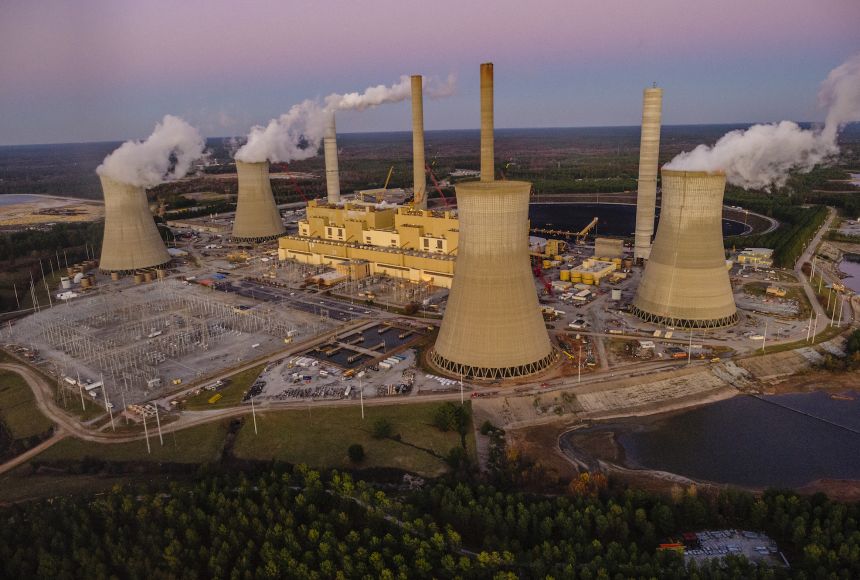By trapping heat from the sun, greenhouse gases have kept Earth's climate habitable for humans and millions of other species. But those gases are now out of balance—compared to historic levels—and threaten to change drastically which living things can survive on this planet—and where.
Atmospheric levels of carbon dioxide—the most dangerous and prevalent greenhouse gas—are at the highest levels ever recorded. Greenhouse gas levels are so high primarily because humans have released them into the air by burning fossil fuels. The gases absorb solar energy and keep heat close to Earth's surface, rather than letting it escape into space. That trapping of heat is known as the greenhouse effect.
The roots of the greenhouse effect concept lie in the 19th century, when French mathematician Joseph Fourier calculated in 1824 that Earth would be much colder if it had no atmosphere. In 1896, Swedish scientist Svante Arrhenius was the first to link a rise in carbon dioxide gas from burning fossil fuels with a warming effect. Nearly a century later, American climate scientist James E. Hansen testified to the United States Congress that “The greenhouse effect has been detected and is changing our climate now."
Today, climate change is the term scientists use to describe the complex shifts, driven by greenhouse gas concentrations, that are now affecting our planet’s weather and climate systems. Climate change encompasses not only the rising average temperatures we refer to as global warming but also extreme weather events, shifting wildlife populations and habitats, rising seas, and a range of other impacts.
Governments and organizations around the world, such as the Intergovernmental Panel on Climate Change (IPCC), the United Nations body that tracks the latest climate-change science, are measuring greenhouse gases, tracking their impacts, and implementing solutions.
Major Greenhouse Gases and Sources
Carbon dioxide (CO2): Carbon dioxide is the primary greenhouse gas, responsible for about three-quarters of emissions. It can linger in the atmosphere for thousands of years. In 2018, carbon dioxide levels reached 411 parts per million at Hawai'i's Mauna Loa Atmospheric Baseline Observatory, the highest monthly average ever recorded. Carbon dioxide emissions mainly come from burning organic materials: coal, oil, gas, wood, and solid waste.
Methane (CH4): The main component of natural gas, methane is released from landfills, natural gas and petroleum industries, and agriculture (especially from the digestive systems of grazing animals). A molecule of methane doesn't stay in the atmosphere as long as a molecule of carbon dioxide—about 12 years—but it is at least 84 times more potent over two decades. It accounts for about 16 percent of all greenhouse gas emissions.
Nitrous Oxide (N2O): Nitrous oxide occupies a relatively small share of global greenhouse gas emissions—about six percent—but it is 264 times more powerful than carbon dioxide over 20 years, and its lifetime in the atmosphere exceeds a century, according to the IPCC. Agriculture and livestock, including fertilizer, manure, and burning of agricultural residues, along with burning fuel, are the biggest sources of nitrous oxide emissions.
Industrial gases: Fluorinated gases, such as hydrofluorocarbons, perfluorocarbons, chlorofluorocarbons, sulfur hexafluoride (SF6), and nitrogen trifluoride (NF3) have heat-trapping potential thousands of times greater than CO2 and stay in the atmosphere for hundreds to thousands of years. Accounting for about two percent of all emissions, they're used as refrigerants, solvents, and in manufacturing, sometimes occurring as byproducts.
Other greenhouse gases include water vapor (H2O) and ozone (O3). Water vapor is actually the world's most abundant greenhouse gas, but it is not tracked the same way as other greenhouse gases because it is not directly emitted by human activity and its effects are not well understood. Similarly, ground-level or tropospheric ozone (not to be confused with the protective stratospheric ozone layer higher up) is not emitted directly but emerges from complex reactions among pollutants in the air.
Effects of Greenhouse Gases
Greenhouse gases have far-ranging environmental and health effects. They cause climate change by trapping heat, and they also contribute to respiratory disease from smog and air pollution. Extreme weather, food supply disruptions, and increased wildfires are other effects of climate change caused by greenhouse gases. The typical weather patterns we've grown to expect will change; some species will disappear; others will migrate or increase in number.
How to reduce greenhouse gas emissions
Virtually every sector of the global economy, from manufacturing to agriculture to transportation to power production, contributes greenhouse gases to the atmosphere, so all of them must evolve away from fossil fuels if we are to avoid the worst effects of climate change. Countries around the world acknowledged this reality with the Paris Climate Agreement of 2015. The changes will be most important among the biggest emitters: Twenty countries are responsible for at least three-quarters of the world's greenhouse gas emissions, with China, the United States, and India leading the way.
The technologies for ramping down greenhouse gas emissions already exist, for the most part. They include swapping fossil fuels for renewable sources, boosting energy efficiency, and discouraging carbon emissions by putting a price on them. The world, technically, has only one-fifth of its "carbon budget"—the total is 2.8 trillion metric tons—remaining in order to avoid warming the planet more than 1.5 degrees Celsius. Halting the trends already in motion will require more than just phasing out fossil fuels. In fact, the paths to halting global temperature increases of 1.5 or two degrees Celsius, the two goals outlined by the IPCC, rely in some way on adopting methods of sucking CO2 from the sky. Those include planting trees, conserving existing forests and grasslands, and capturing CO2 from power plants and factories.
